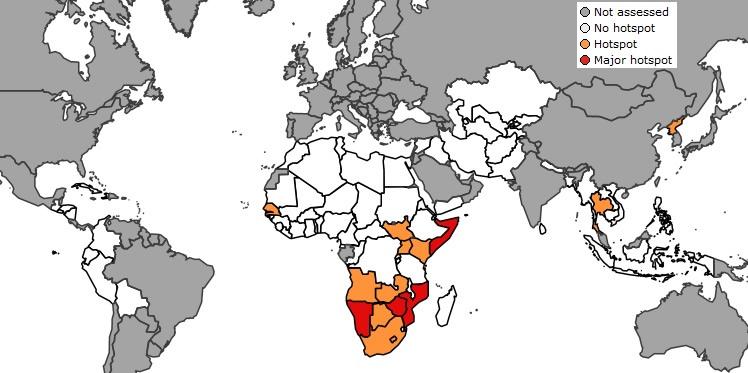
ASAP hotspot assessment of 30/07/2019
© European Union, 2019
The July edition of the JRC's Anomaly Hotspots of Agricultural Production (ASAP) assessment is now available at:
Anomaly Hotspots of Agricultural Production (ASAP) assessment
Main findings of the July global overview:
- In the northern part of East Africa the main season is progressing well, while in the Horn, parts of Kenya, Uganda and Somalia are suffering the consequences of low levels of cereal production, due to a delay of over a month in the onset of the main season.
- Southern Africa is facing the impact of drought and cyclones, which translated into decreased maize production. Regional supply is generally stable thanks to high stocks from last year’s bumper harvest, but maize prices are increasing in Zimbabwe.
- In continental South-East Asia, mainly Thailand, the current drought is affecting rain-fed crops and pastures, and irrigated rice areas have been reduced as a result of low water levels in reservoirs.
- In North Korea, the southern half of the rice bowl area has received little rainfall since 20 June which has impacted rain-fed crops (maize), increased water depletion in reservoirs and delayed growth of irrigated rice.
- Irregular and below-average rainfall is affecting the early stages of the primera season in the Central Caribbean region and Haiti. There is still room for recovery if rainfall improves in the coming weeks.
The next assessment is scheduled for the first week of September 2019.
Details
- Publication date
- 31 July 2019
